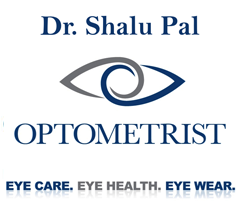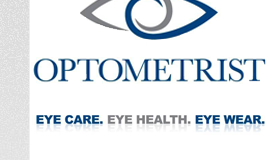Contents |
Digital Lens Technology for Today's Lenses
Introduction
Eyeglasses have been used since at least the middle ages to help scribes and copyists see better, but today the technology used to create ophthalmic quality lenses is far removed from the primitive lens grinding techniques used then.
If you are looking into purchasing new progressive or single-vision lenses in the near future, you may hear words describing them as free-form, direct-to-surface, or high-definition; lenses can be digitally designed, digitally enhanced, digitally processed or digitally manufactured, or even all of the above. But what on earth do all these things really mean? What is the truth behind all the hype and buzzwords? Many of these terms seem to be interchangeable, so what is actually happening with the field of optical lens manufacturing?
Making Lenses Then
Up until about the late 1980s, optical lenses were made by molding a “blank” lens in a curved form that would become the front surface. Then, the back surface was ground with a lathe to put the right curvature that would combine with the front to form the prescription power needed. Then, the lens would be refined and polished, cut to shape and size and mounted in the frame. There was no way to customize any particular lens design, because the lenses were limited to the curves available in the molds and surfacing equipment, which was made to manufacture its specific lens design only.
Even since that time, when computerized manufacturing techniques came into existence, and although this process could be thought of as being “digital,” it still didn’t mean that older designs of could be improved upon. A progressive lens made from a design that is 20 years or more old is still going to be made to that 20-year-old pattern, and making it by digital methods doesn’t necessarily make it better, although it would be safe to say that lens manufacturing certainly became more accurate and precise.
“Digital” Defined
Processing information, changing it, sending it, keeping it, representing it and displaying it is a good way to think of the term “digital,” although there is no reference to optical lenses mentioned. But lenses, especially progressives, which are used for reading, have been made using digital technology for quite a while, including all of these processes:
- The method used to make the lens mold
- How the lens was designed originally
- The generation of the curvatures on either the front or the back surfaces, or both
It may be helpful to understand what is meant by “digital lens design” if we think about it as a process of manufacturing, rather than a specific lens or lens type.
Free-Form Lenses, Designed for the Unique Individual
While older technology could manufacture all lens prescription powers using only a few curvature molds, the technology of computerized, digitally designed and generated lenses can have precision curvatures for every prescription power ever conceived.
The term usually used to describe optical lenses made with new and advanced digital technology is "free-form", but, as noted earlier, alternative terms may be used by different retailers of optical lenses made with these processes.
Free-form lens designs are especially helpful for those who spend a significant amount of time using electronic devices, like computers, smart phones, tablets or readers. If you spend a lot of time looking at digital screens, it makes sense to use the most advanced type of interface available. Hours spent trying to keep an outdated computer monitor clear, rather than using one with enhanced resolution and high-definition image generation is false economy. Just as using a well-designed chair, using the best lens design will make working hours easier and more comfortable.
By carefully adjusting a well-selected eyewear frame and then taking precise measurements, a pair of free-form lenses can be made for each individual’s prescription, which will result from direct surfacing, instead of relying on pre-made molds; that is , both front and back surfaces can be manufactured directly from the ophthalmic material, either glass or plastic. (Most modern optical lenses are made of high-grade, impact-resistant plastic.)
Computer software allowing the lens fitter to enter prescription power, information about the frame and how it will be used results in lenses that are completely customized to a degree not possible with traditional lenses or equipment.
The cutting of the lens can be done on both sides of the lens; second or third cutters then refine and smooth the surface of each lens on a microscopic level, and final polishing can be done without changing the lens curvatures.
Free-Form for All?
The middle ages are over.
Perhaps not everyone will need this type of lens design, but if you have ever had problems with adaptation to new eyewear or optical prescriptions, or if you spend several hours each day using electronic devices, you should consider it as an investment in your daily comfort and efficiency. Optical lenses have never been available before with this level of sophistication and customization, whatever terminology is used to describe it. Free-form lenses might be just perfect... just for you.






